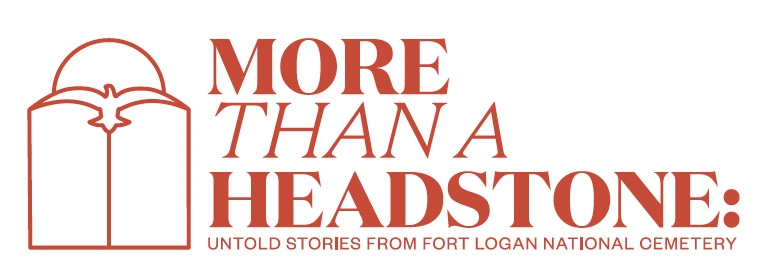A Man Among Dough-Boys
By Geoffry Monteith
John Dross
October 25, 1874-March 5, 1944
On October 25, 1874, John Dross was born to Cornelius and Martha Dross on the Dutch Wadden island of Texel in Holland.[1] The fifth of eight children, Dross and his family emigrated to the United States by the year 1880.[2] First settling in New Jersey, the family lived at 251 Clay Street in Patterson.[3] Before his service, Dross worked as a wood turner.[4] Dross enlisted in the Army on December 20, 1898, ten days after the signing of the Treaty of Paris, which ended the Spanish-American War.[5] Beginning after struggles for independence in Cuba and the Philippines, and the destruction of the USS Main in Havana, the Spanish-American War proved to be a brief and decisive conflict.[6] The conflict led to the ceding of the last vestiges of the Spanish Empire to either independent rule in the case of Cuba, or American control in the cases of Puerto Rico, Guam, and The Philippines.[7]
While Dross may have enlisted in support of the Spanish-American War and missed it, the following years saw much more intense fighting in the Philippine-American War, wherein Dross did serve in the 30th United States Infantry regiment.[8] The reasoning behind the American annexation of the Philippines arose out of the ideology of Manifest Destiny: the need for an ever-expanding reach of American territory and influence. The desire for colonial expansion, and the contemporary perception of many non-whites, Filipinos included, as inefficient or outright incapable of self-government led to the general acceptance among the American public of the initial occupation as beneficial to both the United States and the Philippines.[9] However, support for the already contentious war – portions of the American public opposed the colonial annexation from the outset – dwindled as it dragged on over the years and brutalities escalated.[10] Stemming from the change in colonial rule, Philippine nationalists resisted the American occupation of the archipelago. Beginning with a more traditional style of warfare, the conflict quickly spiraled into a guerilla war as the nationalists had had no hope of overcoming American military superiority and, thus, began using tactics in line with nonconventional warfare.[11] The struggle lasted three years, 1899-1902, and ended with a death toll of over 220,000 Filipinos and 4,200 Americans – more than in the preceding Spanish-American War.[12] Dross and the 30th arrived in 1901 and carried out their service primarily on the island of Mindoro.[13] The 30th itself was first organized just that same year at Fort Logan, Colorado and the Presidio of San Francisco.[14]
After the conflict, Dross would re-enlist twice more in 1905 and 1912. In each case, he served in the 125th company of the Coastal Artillery Corps.[15] Reorganized from the earlier regiments to better discern heavy artillery from field artillery in 1901, the Coastal Artillery Corps comprised of former heavy artillery units and served to man harbor fortifications and batteries along the nation’s seaboard. Dross did just this at Fort Terry, New York.[16] In operation from 1879 to 1948, Fort Terry comprised one of the principle pieces of fortification around Long Island Sound.[17] He later served at Fort Trumbull, Connecticut in the latter half of 1910, and then Fort HG Wright on Fishers Island, New York from 1911 to 1915.[18] Dross then received an honorable discharge.[19]
Coastal Artillery Corps Recruitment Poster [30]
When the United States entered the First World War, the men of the Coastal Artillery Corps went to Europe and manned the heavy artillery behind the trenches in France.[20] The relatively small size of the United States military at its entrance into the First World War meant any trained soldiers, especially those familiar with the heavy guns would need to go straight to the front. Dross, however, was not keen to return to his old regiment. Now a captain, he served as a commanding officer of the 341st Machinegun Regiment, Company A.[21] A part of the 89th Infantry Division, Dross would have seen combat during the Meuse-Argonne Offensive. The 89th specifically participated in the Battle of St. Mihiel in September of 1918.[22] After the November Armistice, Dross remained as a part of the initial occupation of Germany, now leading the 314th Train Headquarters.[23] Dross then returned to the United States in 1919, departing from Brest, France.[24]
After the war, Dross returned to the United States and found his way to Colorado. In 1920 Dross had married his wife, Hattie, and the two lived on and owned a farm in Precinct 32 of Pueblo, Colorado.[25] Dross continued his career in the Army, and in 1930 he found himself stationed at Fort Reilly, Kansas. He had with him his wife Hattie, and her thirty-three-year-old daughter Edith Richardson.[26] John and Hattie themselves do not appear to have had any children during the course of their marriage. In 1940, the family lived on a farm in Precinct 27, Arapahoe, Colorado, near the border with Kansas.[27] They lived with Edith, and the family’s housekeeper, Irene Hogan.[28] By the end of his career, John Dross had reached the rank of Captain in the United States Army, had served in at least two major conflicts, and had seen stationing at multiple forts and bases around the country. Though he had no children of his own, he provided a home for his stepdaughter. On March 5, 1944, Captain John Dross died at the age of seventy. Hattie died twelve years later, in Pima, Arizona, at age eighty-five.[29] Both now rest at Fort Logan National Cemetery, in Denver, Colorado.

![Coastal Artillery Corps Recruitment Poster [30]](https://images.squarespace-cdn.com/content/v1/5cdee20d61310c0001c2cbbe/1584904677236-SIKNHVCVBENCYRG79KNL/Doughboys.jpeg)









